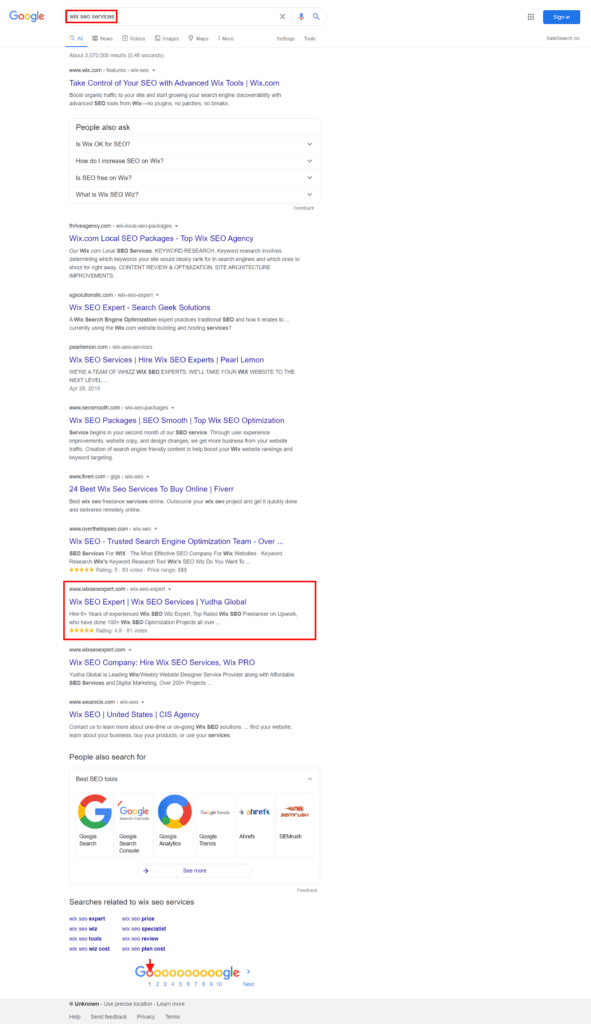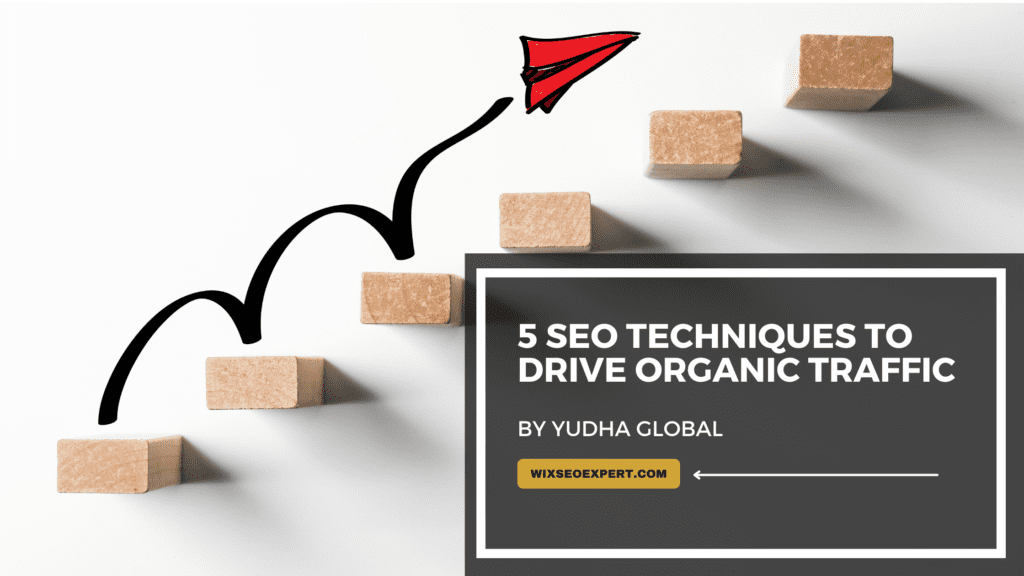Are you tired of writing blog posts that don’t get the traffic and engagement they deserve? Look no further! In this post, we’ll break down the 10 essential elements you need to optimize your blog posts for search engines. From headline optimization to proper keyword placement, we’ve got you covered. Whether you’re a seasoned blogger or just starting out, these tips will help take your content to the next level and drive more traffic to your site. So let’s dive in!
![How to Write a Blog Post? [Infographic]](https://yudhaglobal.ca/wp-content/uploads/2022/10/2-410x1024.webp)
Table of Contents
What is SEO Optimized Blog Post Format?
To ensure your blog post is optimized for search engines, there are a few key elements you’ll want to include. First, make sure to do your research and target keywords that are relevant to your topic. You’ll want to sprinkling these throughout your post, including in the title, in the body, and in the meta tags.
In addition to targeting keywords, also be sure to focus on creating quality content that is interesting and informative.
This will help keep readers engaged, and also help encourage them to share your post with others. Finally, don’t forget to include a call-to-action at the end of your post, inviting readers to take some kind of action such as subscribing to your blog or following you on social media.
By following these simple tips, you can ensure that your blog post is optimized for both search engines and readers. Good luck!
Keyword Research
Keyword research is one of the most essential elements of an SEO-optimized blog post format. By targeting specific keywords that are relevant to your niche, you can increase your chances of ranking higher in search engine results pages (SERPs).
There are a number of ways to conduct keyword research. One method is to use a keyword research tool like Google AdWords Keyword Planner , SEMRush, Ahrefs, SEMScoop, Keywords Everywhere, or Moz Keyword Explorer. Another option is to simply brainstorm a list of potential keywords yourself.
Once you’ve compiled a list of relevant keywords, the next step is to integrate them into your blog post. Use your keywords throughout the article, including in the title, headings, and body text. However, don’t overdo it – too many keywords will result in search engine penalties for keyword stuffing. Instead, focus on using your keywords in a natural way that flows with the rest of your content.
Finally, use a tool like Google Search Console to track your progress and ensure that your keywords are driving traffic to your blog. This can help you identify any issues or areas of improvement.

Headlines and Titles
Your headlines and titles are the first thing that people will see when they come across your blog post, so it’s important to make sure that they’re optimized for search engines. Here are a few tips:
– Use keyword-rich phrases in your headlines and titles to help your post rank higher in search results.
– Keep your headlines and titles short and to the point. Long, rambling titles will only serve to turn people away.
– Make sure that your headlines and titles are catchy and eye-catching. This will help to draw people in and encourage them to click through to your post.
– Consider using phrases like “Top 10 Tips” or “How To” in your headlines and titles in order to grab the reader’s attention.
– Make sure that your headlines and titles accurately reflect the content of your post so that readers don’t feel misled when they click through.
– Use capitalization, punctuation and other formatting techniques to make your headlines and titles stand out.
By following these tips, you can ensure that your headlines and titles will be optimized for search engines and draw in readers. With the right combination of keywords, formatting, and catchy phrases, you can make sure that your post stands out from the rest.

Meta Descriptions
A meta description is a short summary of a web page’s content. It is displayed in search engine results pages (SERPs) under the page’s title and URL. Meta descriptions are meant to give users a glimpse of what the page is about so they can decide whether or not to click through to it.
Meta descriptions are important for SEO because they are one of the main factors that influence a user’s click-through rate (CTR). A high CTR can lead to higher rankings in the SERPs, while a low CTR can result in lower rankings. Meta descriptions are also important for social media optimization (SMO). When a page’s meta description is used as the text for a social media post, it can help increase the post’s CTR.
To optimize your blog posts for SEO, make sure to include relevant and keyword rich meta descriptions. Keep your meta descriptions under 160 characters so they don’t get cut off in the SERPs, and try to include calls-to-action (CTAs) when possible.
Finally, make sure to update your meta descriptions regularly. This helps ensure that they are descriptive and up-to-date with your content.

Images and Visuals
Images and visuals are an important part of any blog post. Not only do they add interest and engage the reader, but they can also help to communicate your message more effectively.
When choosing images and visuals for your blog post, there are a few things to keep in mind:
– Make sure the image is relevant to the topic of your post.
– Choose an image that is high quality and has a clean, professional look.
– Optimize your images for search engines by including keywords in the file name and alt text.
– Use caution when using copyrighted images, and be sure to get permission if you plan to use someone else’s work.
Adding images and visuals to your blog posts can help you create more interesting and engaging content that will resonate with your readers. Keep these tips in mind to ensure that your images are working hard for you and your business.
Check out Our Blog Post Design Samples -
Internal Linking Structure
An SEO-optimized blog post should have a well-structured internal linking system. This means that the links within the body of the article should be thoughtfully placed and lead to other related articles on your site. This helps search engines understand the relationship between your articles and can result in better crawling and indexing of your content.
When creating internal links, be sure to use relevant keywords as the anchor text. This will help improve your click-through rates from search results and give users a better idea of what they’ll find when they click on your link.
Finally, don’t overdo it with the internal links. A few well-placed links are all that’s needed to help search engines and users navigate your site. Too many links can be overwhelming and may actually hurt your SEO efforts.
Overall, internal linking is an important part of SEO and should be done with care. When used correctly, it can improve your site’s visibility and provide a better user experience.

URL Structure and Readability
When it comes to SEO-optimized blog post formats, one of the most important elements is the URL structure. The URL should be short and sweet, and include keywords that are relevant to the topic of the post. For example, if you were writing a post about healthy recipes, your URL might look something like this:
www.example.com/healthy-recipes
This is much more user-friendly and search engine friendly than a long, convoluted URL with a bunch of random numbers and letters. In addition to making your URLs readable and keyword-rich, you should also make sure they’re static. That means using hyphens (-) to separate words, rather than underscores (_). Static URLs are easier for both users and search engines to read and understand.
Overall, when it comes to SEO-friendly blog post formats, your URL structure should be readable and include keywords that are relevant to the topic of the post. This will help ensure that your post is seen by more people and can result in a better ranking on search engines.
Utilizing Structured Data Markup
Utilizing structured data markup is one of the essential elements of an SEO-optimized blog post format. By adding structured data markup to your blog posts, you can help search engines understand the content of your blog posts and display them in rich snippets in search results. This can help improve your click-through rate and attract more traffic to your blog.
There are a few different ways to add structured data markup to your blog posts. One way is to use schema.org markup. Schema.org is a shared vocabulary that you can use to markup your content so that it can be better understood by search engines. Another way is to use microdata.
Microdata is a set of HTML tags that you can use to annotate your content with additional information about each piece of content. Finally, you can also use RDFa, which stands for Resource Description Framework in Attributes. RDFa is a type of HTML5 markup that allows you to embedRich Media into your web pages.
No matter which method you choose, adding structured data markup to your blog posts can help search engines better understand the content of your blog and improve your chances of appearing in rich snippets in search results.
This can help you attract more visitors to your blog, leading to more readers and higher engagement.

Writing for Social Media
Assuming you want a blog article discussing the SEO of social media:
SEO is important for any website that wants to rank high in search engine results pages (SERPs), but it’s especially important for social media sites. After all, these are the platforms where people are most likely to share your content, which can help your site earn valuable backlinks.
To make sure your social media posts are optimized for SEO, here are a few essential elements to include:
1. A catchy headline: Your headline should be attention-grabbing and relevant to the content of your post. It should also include keywords that you want to rank for.
2. Relevant images: Include at least one image in your post, and make sure it’s relevant to the topic at hand. Optimize your images by including keywords in their file names and alt text.
3. Engaging content: Write content that’s interesting and informative, and make sure to use keywords throughout. However, don’t stuff your keywords in; that will only hurt your SEO efforts.
4. Calls to action: Include calls to action (CTAs) telling readers what you want them to do next, such as visiting your website or sharing your content on their own social media channels.
5. Hashtags: Use hashtags sparingly, but do use them – they can be great for getting more eyes on your content. Just don’t go overboard; too many hashtags can be off-putting.
By including these elements in your social media posts, you can boost your SEO and get more visibility for your content. Of course, there’s much more to SEO than just optimizing social media posts, but it’s a great place to start.
Quality Content is King
Quality content is the most important element of an SEO-optimized blog post. There are a few things to keep in mind when creating quality content:
1. Write for your audience first and foremost. Write content that is interesting, informative, and engaging.
2. Keep it fresh. Don’t recycle old content or regurgitate information that can be found elsewhere on the web. Google wants to see new, original content when it crawls your site.
3. Make it keyword rich. Use relevant keywords throughout your content to help improve your search engine ranking. But don’t overdo it – too many keywords will result in keyword stuffing, which will actually hurt your ranking.
4. Structure your posts with headlines, subheadings, and bullet points. This makes your content easier to read and helps Google understand the hierarchy of your article.
5. Use images, infographics, and videos to break up your text and add visual interest. People are more likely to share articles that are visually appealing, so this can also help improve your traffic levels .
6. Make sure your content is accurate and up-to-date. People will not return to a blog post that contains outdated or incorrect information, so make sure you are providing the most relevant and accurate information possible.
Conclusion
Creating an SEO-optimized blog post isn’t as hard as it might seem. All you need to do is be mindful of the ten essential elements we’ve discussed and make sure to include them in your posts. Once you’ve got that down, all that’s left is to write quality content and use some effective keywords. With this simple formula, you can create SEO-friendly blog posts that will drive more organic traffic to your website and improve its visibility on search engines like Google or Bing.




